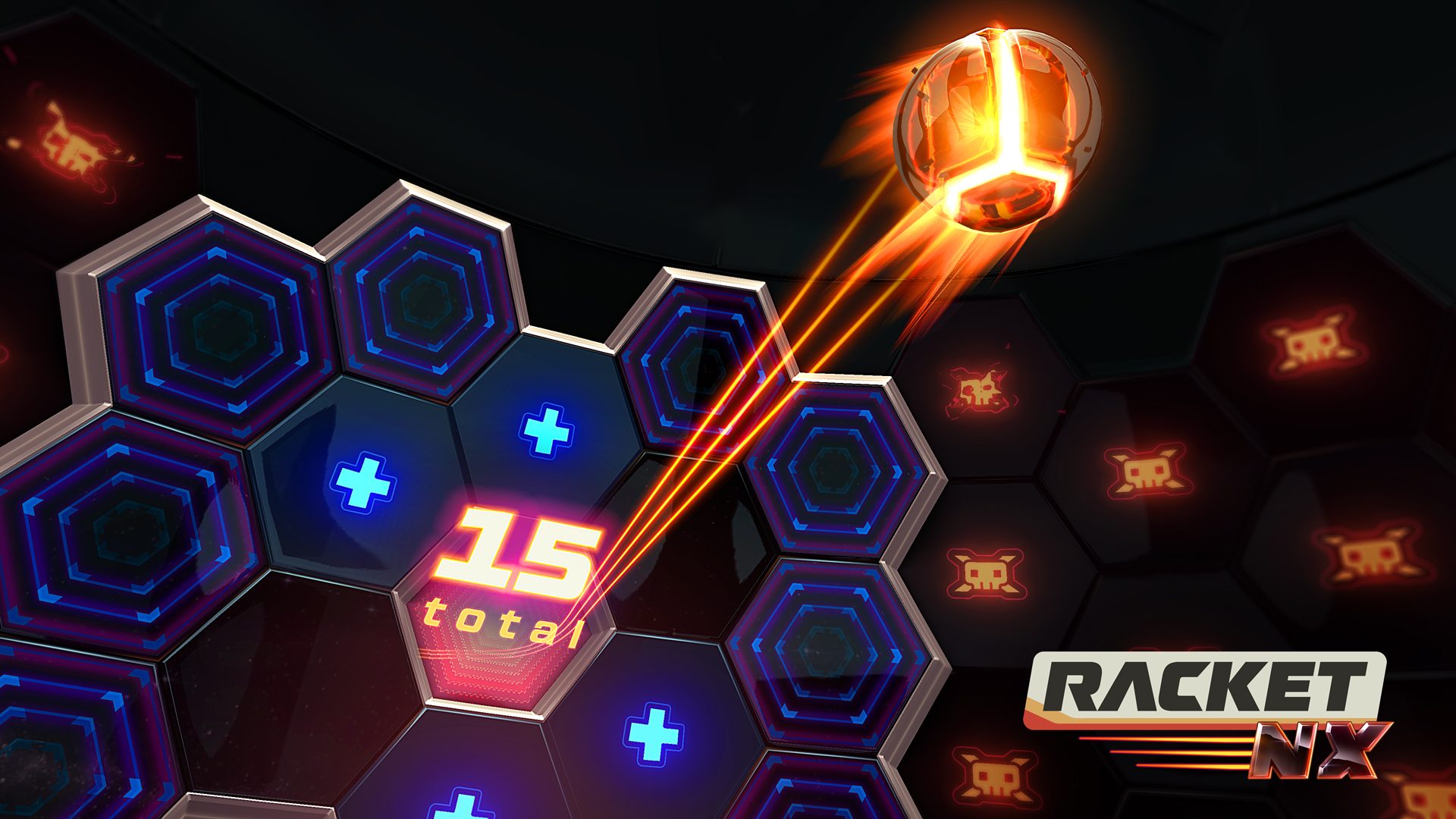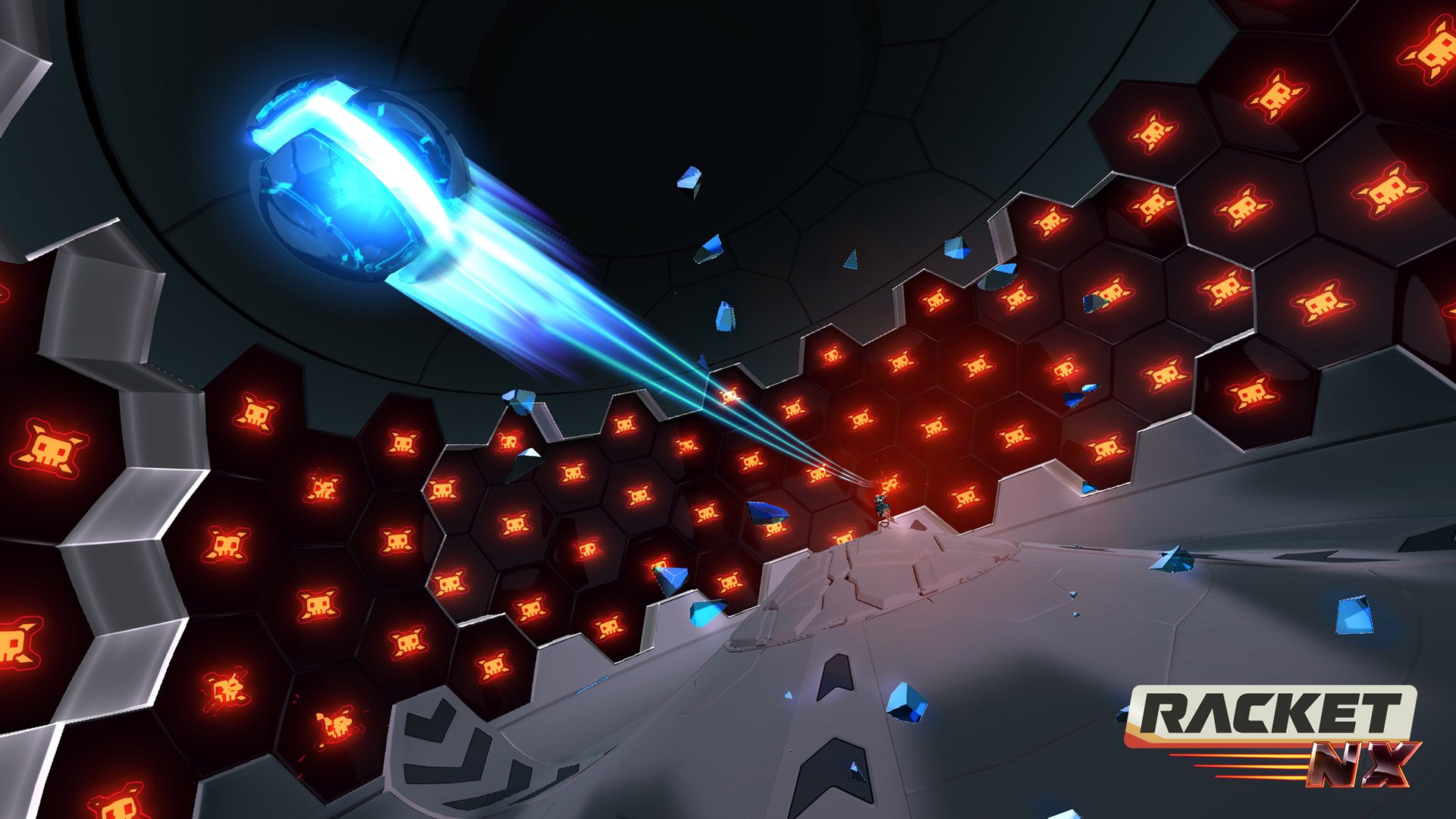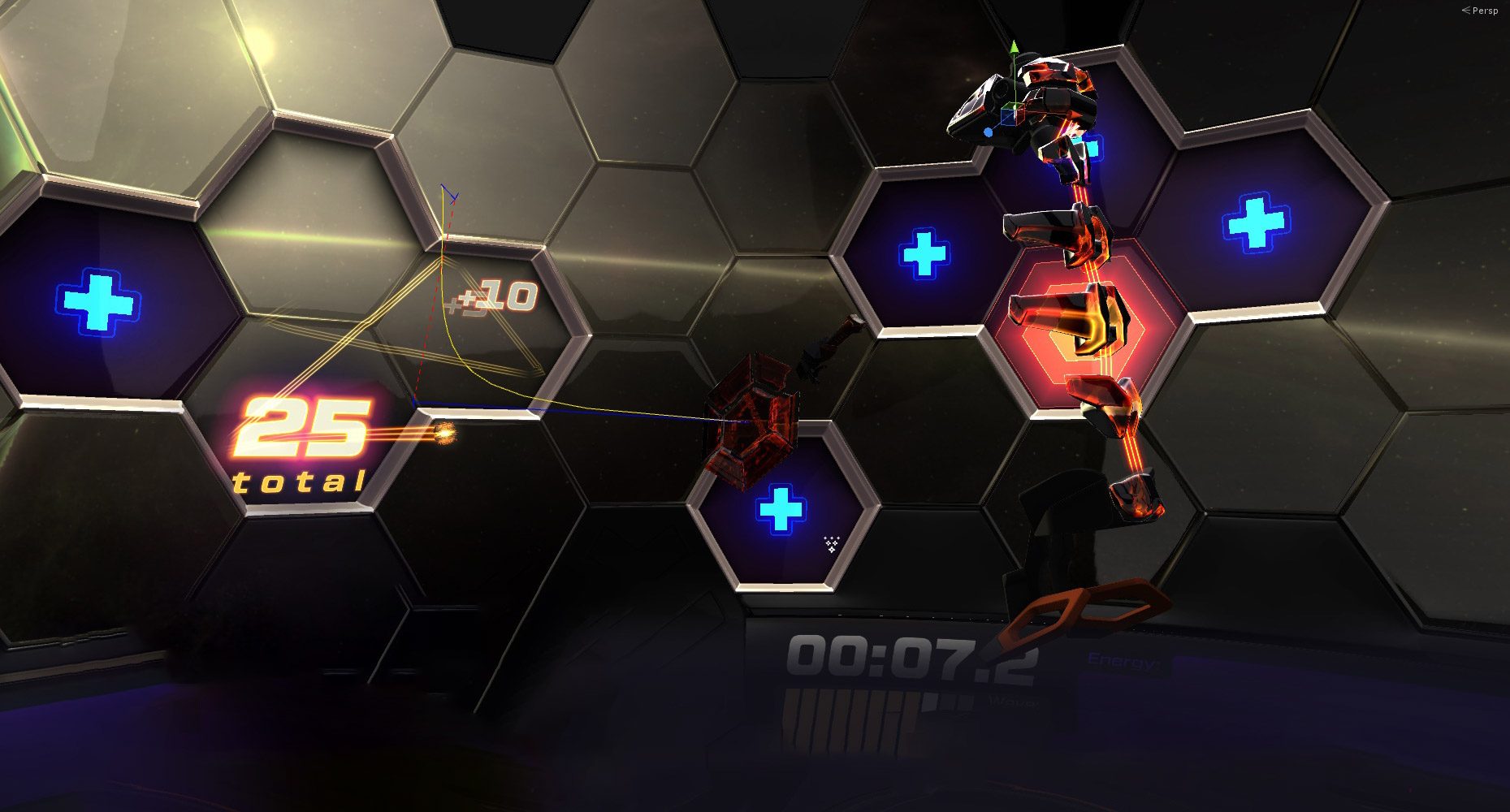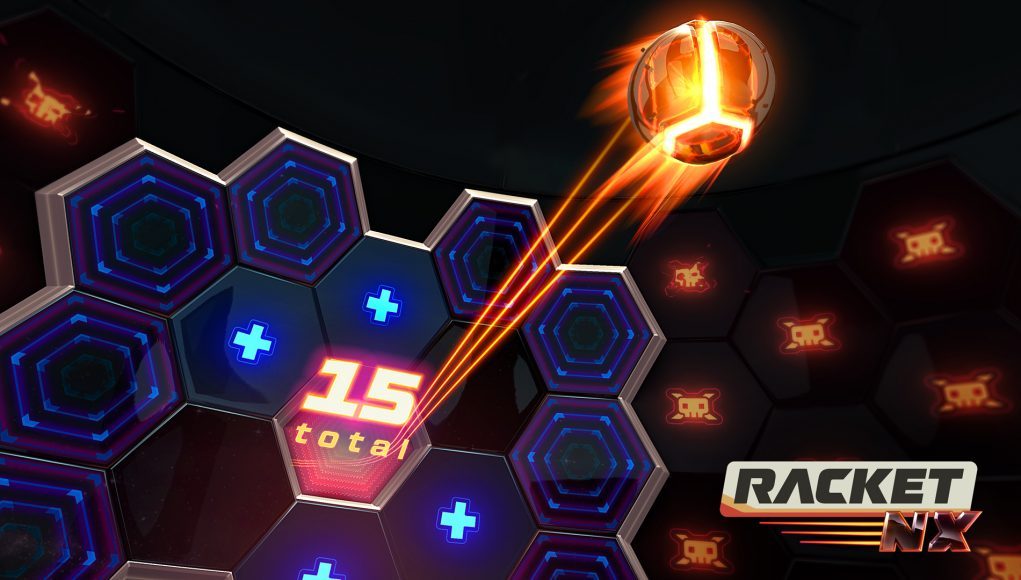Racket: NX (2018), the VR racket sports game, is now out of Early Access. Offering a surprising level of polish, fluid gameplay, and both an engaging single player and competitive multiplayer mode, Racket: NX has taken a fairly simple concept and fleshed it out to an ultimately fun (and addictive) conclusion.
Racket: NX Details:
Developer: One Hamsa
Available On: Steam (HTC Vive, Oculus Rift, Windows VR), Oculus Store (Rift), Windows Store (Windows VR)
Reviewed On: Oculus Rift, HTC Vive
Release Date: July 19th, 2018
Gameplay
Featuring breakable blocks like gaming classics Breakout or Arkanoid, Racket: NX pits you against a 360 degree domed wall filled with flashing yellow targets of various designs and placements. In a race against an ever dwindling energy meter, your job is simple: accurately break the blocks as fast as possible, collect energy pick-ups to refill your energy bar, and avoid the precariously placed energy-drainers which are littered throughout the multi-stage levels.
The game contains three principal modes: solo mode for classic single player gameplay, arcade mode for infinite survival with both classic and ‘zen’ mode, and multiplayer mode for one vs. one online battles.

Single player mode features four increasingly hard difficulty level subsets: basic, advanced, hardcore and insane. To move up, you’ll have to complete at least four of the five bespoke levels in the preceding difficulty level. Each of these bespoke levels contains multiple stages, which take anywhere from three to ten minutes to pass in total.
Controls are very simple, as you only use one controller (left or right) with a single trigger pull acting as your only input, which retracts the ball to your racket wherever you’re facing. Besides the obvious benefit of getting your ball back quicker, this can be useful when your ball is flying dangerously close to energy drainers so you can pull it to safety mid-run. Smacking the ball harder will send your ball wall-sliding for those tasty combos, so a tactical ball retract is always useful.
Later in the game you run across things such as gravity wells that suck in your ball and spit it out somewhere else, and speed boosters that can either send your ball for a level-winning combo, or straight into a minefield of energy drainers. Floating power-ups such as scatter shots, extra points, and a temporary buff that changes all of the energy-drainers into positive energy pickups keep things moving at a fun, and always varied pace.

While I had trouble at first with the racket (auto-aim is either non-existent or very subtle), after a few levels of brick-bashing and power-upping, I had a good enough grip on how to accurately smack the ball for a more or less consistent arc to my target. As I headed into ‘insane’ mode though, that’s where I really started to feel the rush of the clock ticking, the ball flying just one brick off its target, and that’s where I started to consistently lose a battle of what turned out to be a real test of ball-handing precision.
Abandoning my first real test of difficulty, I went off for my first multiplayer game to see how I stacked up after about an hour and half playing from the beginning tutorial through to the beginning of ‘insane’ mode. When I could find a match (more on that below), they usually turned out to be a thrilling competition that really combines everything you’ve learned in single player, but letting each player return the ball one at a time, which is color-coded when your serve is up.
Getting into a multiplayer game isn’t always easy due to unfortunately low player numbers. You can invite a friend to play, but the friend’s list isn’t as straight forward as I would have hoped. Contacting a friend through the Oculus app and starting an Oculus Party (voice chat) to coordinate—we were both on Rift and playing through the Oculus Store—we were unable to actually get into private match by sending the game’s match invite request. A tone would sound in the game when you were sent a request, but there wouldn’t be any obvious way to accept the invite afterwards. While this will no doubt be fixed in the future (it’s a crucial element, after all), at the time of launch getting into a private match seemed hopeless. We ended up both going for a competitive match at the same moment, and were fortuitously matched up. Now, back to the good.
With voice chat on as default, it was really cool to glance over for a chat, only see that the avatars are equally as futuristic (and befittingly weird) techno-lizards whose heads would articulate and pulse when they talk.

Some niggles not withstanding, Racket: NX is a very solid experience gameplay-wise, which on its own is a pretty great thing to proclaim, but what really puts the cherry on the cake is the game’s impressive visuals. A bright and varied color palette helps you quickly distinguish target from trap, and combines a fun mix of translucent materials to give it that ultra slick, futuristic feeling.
The game’s music also helps set the scene, giving you a pulsing vibe that keeps you going until the energy meter’s tempo takes over for heart-pounding last-minute saves. You can replace it with your own music, but I never felt the need, as it fits to perfectly with the game.
Immersion
In a physical tennis game, learning where the edge of an actual racket is takes a bit of time when you start learning; a few key elements such as the weight of the racket, the vibration of hitting the ball, and how the racket cuts through the air all help us ‘feel’ where the ball hits, and know where it might land. In the physical world, this level of proprioception (knowing the position of your own body) helps the racket become a part of us, something that isn’t equally reflected in VR racket sports currently.
At times, it’s difficult to tell where the virtual racket is when it’s out of your field of view, and it’s not always clear at what angle the racket takes when you swing at the ball. When you do hit a ball, we miss out on that level of proprioception I talked about earlier, making it difficult to fully ground yourself in the virtual sport. That said, this can be overcome with practice though, as you get a better feel for the ball, and become more consistent in your racket hits. This isn’t so much a downfall of the game, but it’s a clear drawback of any racket sport in VR that uses stock motion controllers.
Outside of this, citing all of the game’s positives above, Racket: NX does everything it can to make you lose yourself in the task at hand.
Comfort
As a room-scale game that requires a 360 setup, Rift players may have a tougher time playing without a third sensor due to occlusion. Using a two-sensor, front-facing setup though didn’t create nearly as many issues as I thought I would have, as I only lost positional tracking for a moment and was still be able to return balls with the always-on rotational tracking of my single Touch controller.
Obviously three sensor setups and HTC Vive’s SteamVR base stations won’t have this problem, but it’s a valid warning nonetheless.
While you could play seated, provided you clear your space entirely, this is really a standing game that requires some physicality to play. I found myself switching between left and right hands to give my elbows a break too—but outside the obvious physical demands, the game is ultimately one of the most comfortable VR gameplay experiences you can have, thanks to the room-scale only nature of the game.







